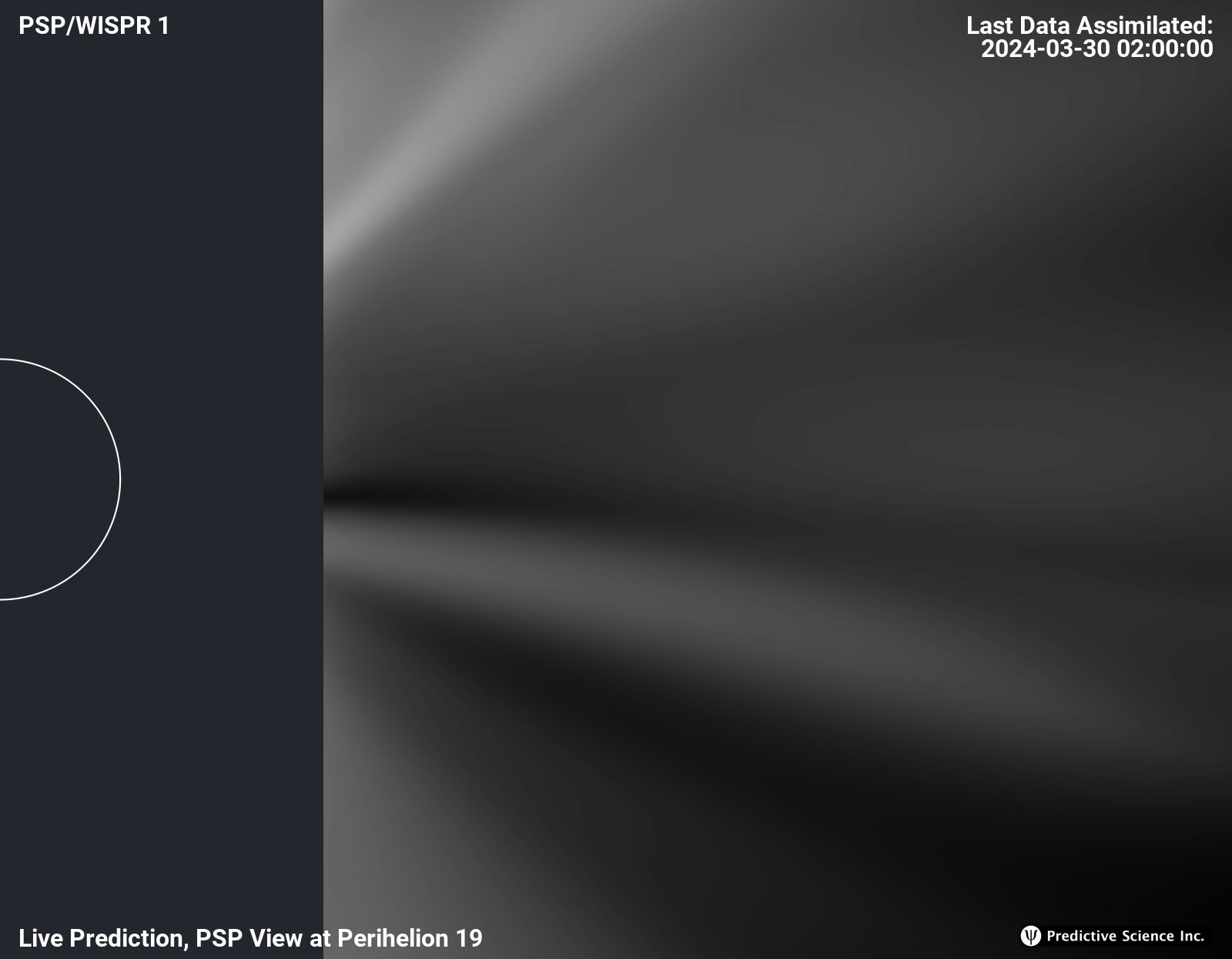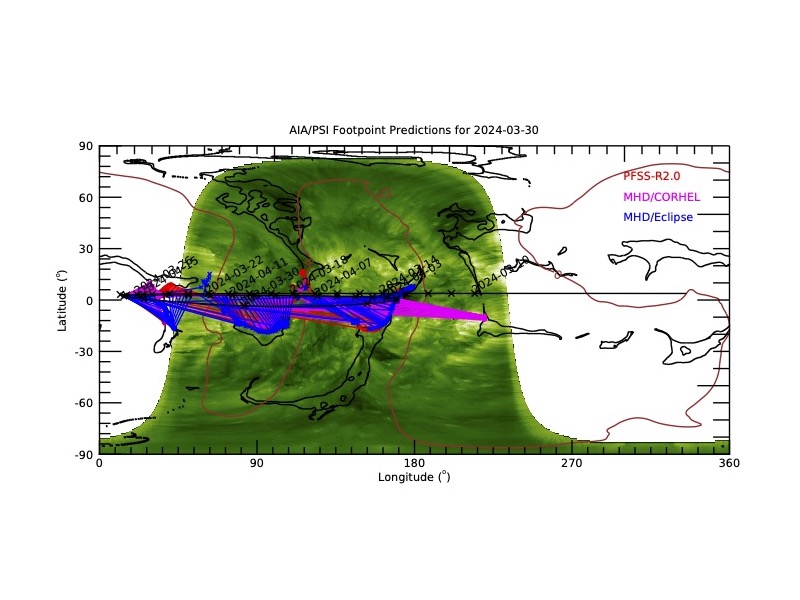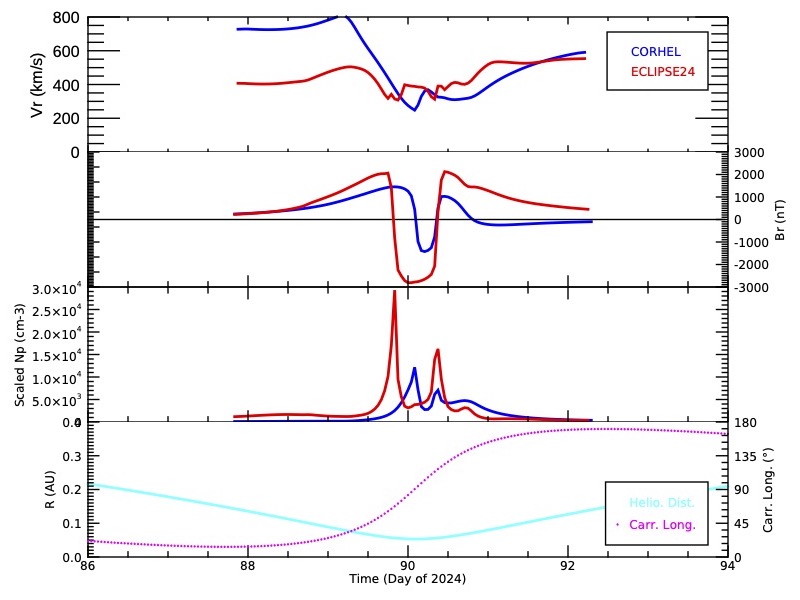Parker Solar Probe’s 19th encounter with the Sun serendipitously occurred just over a
week before the April 8th eclipse (perihelion was at 03/30/2024 0200UT). At perihelion,
Parker reached 11.4Rs. The movies above show our prediction for what the Parker
WISPR-I instrument would have seen during the encounter. On the left is the actual
spacecraft trajectory. The green line marks 20 Rs (the simulation’s outer boundary is 30
Rs) and the inner-most white circle is the solar surface. On the right is a unique
perspective: What would WISPR-I see if it could sit at perihelion, at a fixed Carrington
longitude? In this case, we can observe the time-dependent wind flow past. With these
types of visualisations, we hope to be able to separate spatial and temporal variability in
the structures we see with WISPR.
During this interval, we also made daily predictions of the locations of the source
regions of the plasma that Parker likely encountered. The figure on the left below shows
AIA observations (from our
CHMAP Database Browser), together with the location of
the computed coronal holes from the Eclipse model (black curve) and the location of the
heliospheric current sheet (red curve). The trajectory of Parker is shown by the looping
black line, with asterisks marking each day. The source region every fourth hour is
shown by the straight lines coloured according which model solution was used (PFSS,
MHD/CORHEL, or MHD/Eclipse). These maps provide direct feedback about the
accuracy of the model solutions, and, once the data from Parker is returned, should
allow us to better constrain the solutions.
We also used our standard global thermodynamic MHD model as well as the new time-
dependent model to predict the in-situ plasma and magnetic signatures that Parker
would likely see. This is shown in the lower-right figure. Of particular note is the
significant difference between the new data-assimilative prediction (MHD/Eclipse) and
the standard model (CORHEL). It will be exciting to try to understand how these
differences arise over the next few months and validate the model results with the
measurements when they are available.
During the total solar eclipse, Parker's nominal connectivity will be behind the limb.
However, for the spacecraft has already passed over the solar wind sources that will be
on the West limb plane of the sky during the eclipse. Based on predictions by the Parker
foot-point mapping team, this may be the equatorial coronal hole that was visible near
disk centre at perihelion and which we believe provided much of the solar wind that
Parker would have measured. Intriguingly, if a CME launches from the west limb just
prior to the 8th , not only could we see it during the eclipse, but Parker (and Solar Orbiter)
would likely encounter it too.



